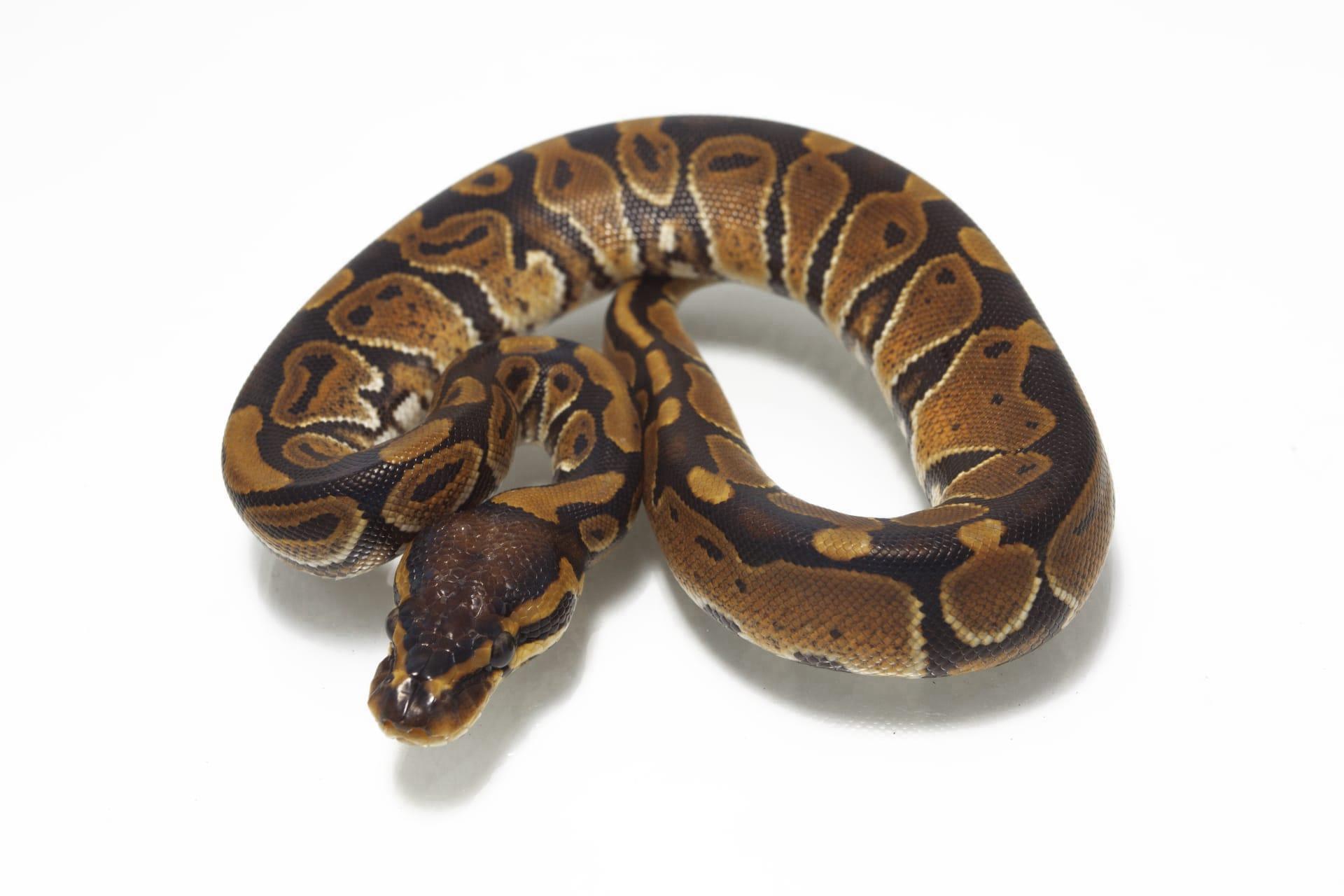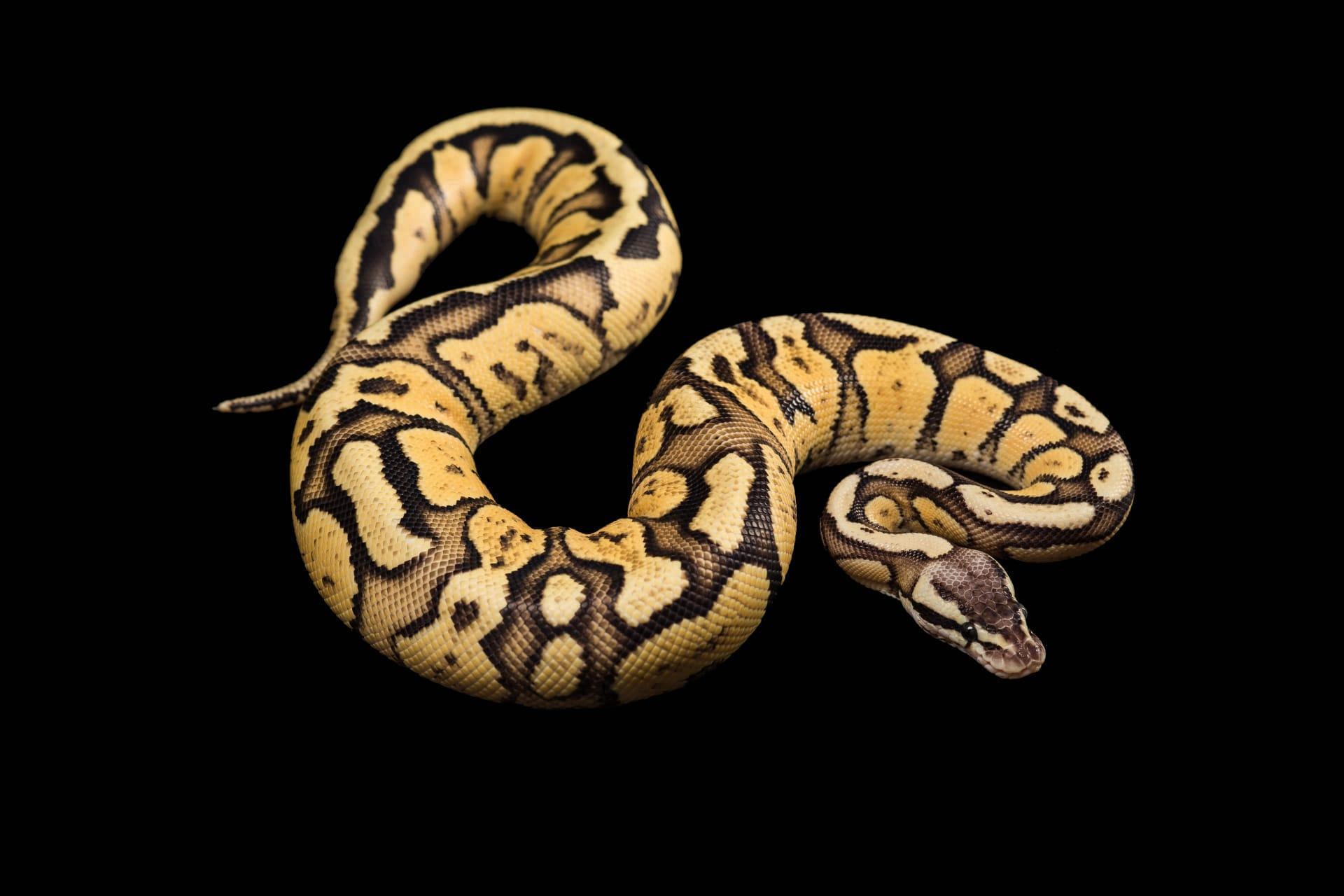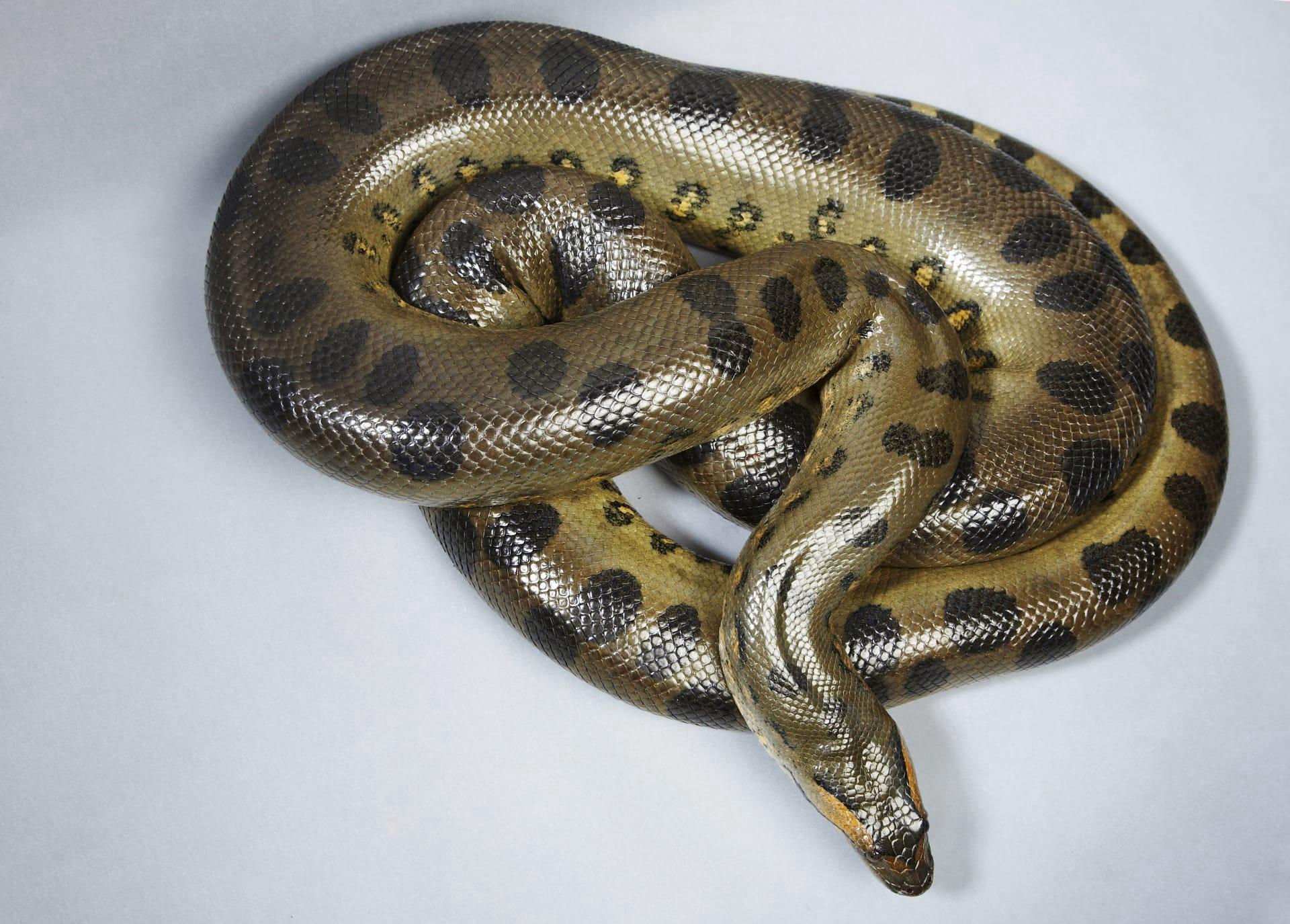Anaconda Snake
- Home /
- Mini Encyclopedia /
- Animal /
- Anaconda Snake
1
Belonging to the Boidae family, Anacondas are renowned for their impressive size. The genus Eunectes, which means "good swimmer" in Greek, encompasses four species: the Green Anaconda (Eunectes murinus), the largest and most famous; the Yellow Anaconda (Eunectes notaeus), slightly smaller; the Dark-Spotted Anaconda (Eunectes deschauenseei); and the Bolivian Anaconda (Eunectes beniensis). The Green Anaconda, particularly, can reach a length of up to 30 feet (9 meters) and weigh over 550 pounds (250 kilograms), making it one of the heaviest known snakes.
The natural habitat of anacondas is predominantly in South America. The Green Anaconda, the most widely recognized, dwells mainly in the Amazon and Orinoco River basins, flourishing in swamps, marshes, and slow-moving streams. These environments provide the perfect blend of water for swimming and dense foliage for camouflage. Yellow Anacondas are found primarily in southern and eastern parts of South America, including Paraguay, southern Brazil, and northeastern Argentina. Dark-Spotted and Bolivian Anacondas have a more limited range, primarily in northern Brazil and Bolivia.

2
Question: Do anacondas eat humans?
Answer: While anacondas are capable of consuming large prey, incidents of them attacking and eating humans are extremely rare. Their diet mainly consists of aquatic and terrestrial animals, such as fish, birds, and small mammals. The Green Anaconda, for example, has been known to take down sizable prey like deer, capybaras, and caimans. The snake's method of killing - constriction - allows it to overpower creatures much larger than itself. However, human-animal conflict can occur when their natural habitat is encroached upon, but such instances are more the exception than the rule.

3
Anacondas have developed remarkable survival strategies that make them apex predators in their environment. They are excellent swimmers and use water to their advantage, often lying in wait, submerged, for unsuspecting prey. Their coloring and pattern are adept for camouflage, blending seamlessly with the murky waters and dense vegetation of their habitats. Once they target their prey, they employ constriction, a method where they coil around the victim and tighten their grip each time the prey exhales, eventually leading to suffocation.
Reproduction is another unique aspect of anaconda life. Females release pheromones to attract males. During mating, several males, sometimes up to a dozen, can form a breeding ball around a single female, each vying for the opportunity to mate. Interestingly, female anacondas exhibit a form of sexual cannibalism, occasionally consuming their smaller male counterparts after mating.

4
In the ecosystem, anacondas play a crucial role as both predator and prey. As top predators, they help maintain the balance by controlling populations of their prey species, which include fish, birds, and mammals. This predatory role ensures the health of the ecosystem by preventing overpopulation of certain species, which could lead to imbalances in food chains.
On the flip side, young anacondas serve as prey for a variety of predators, including large birds, caimans, and other carnivores. This predation helps keep the anaconda population in check. Additionally, their shed skin and waste contribute to the nutrient cycle in their habitats, fostering a healthy and balanced ecosystem.

5
Film: "Anaconda: Silent Killer" (United States, 2015) delves into the elusive world of the Green Anaconda in the Amazon rainforest. This documentary showcases the snake's hunting patterns, mating rituals, and the challenges it faces in its natural habitat, providing viewers with an intimate look at the life of the world's heaviest snake.
Book: "The Anaconda's Shadow" by Paul Rosolie (United States, 2014) offers a thrilling account of the author's experiences in the Amazon rainforest. It combines adventure with insightful observations on the ecology of anacondas and the rich biodiversity of their rainforest home.
Book: "Anacondas: The Hunt for the Blood Orchid" by Hans Bauer and Jim Cash (United States, 2004) is a novel based on the movie of the same name. While it's a work of fiction, it incorporates fascinating details about anaconda behavior and their environment, woven into an adventurous narrative.